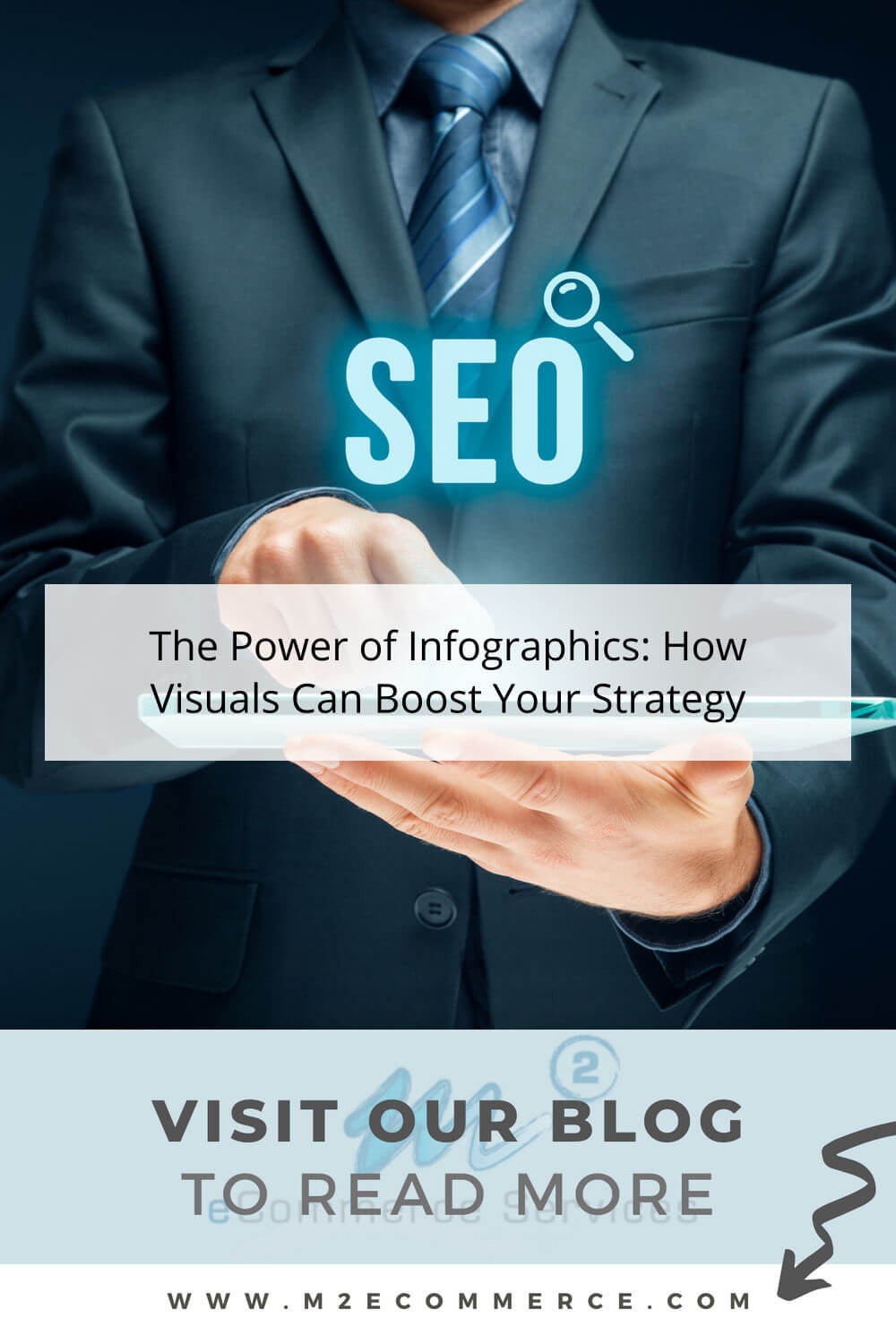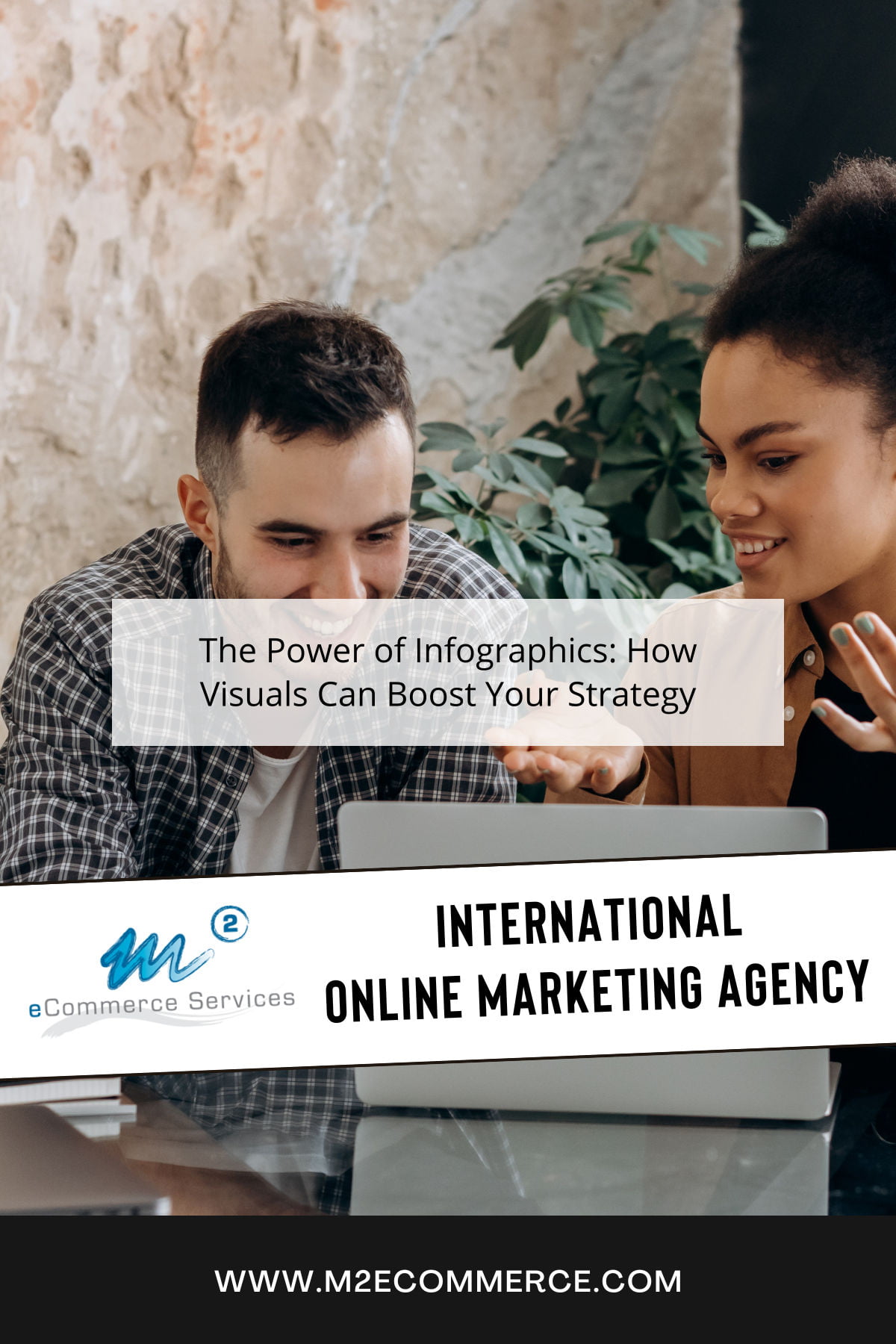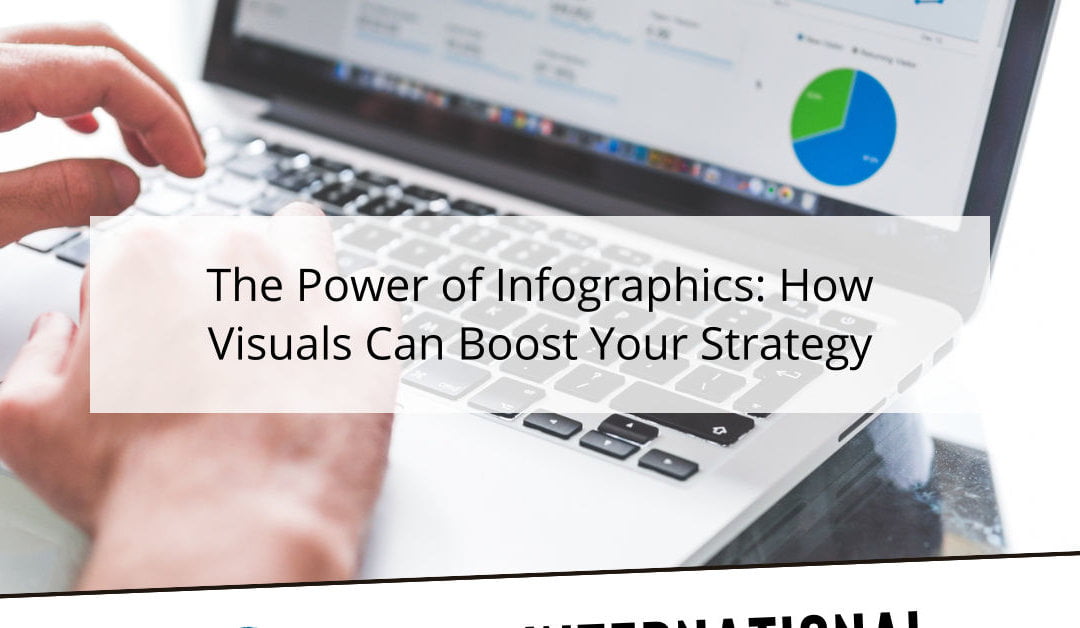Infographics are powerful tools that can help you take control of your content strategy. They allow you to quickly and effectively communicate complicated ideas in a visually engaging way.
Infographics can help you better connect with your audience, making your message more impactful and memorable. For many businesses, infographics can be the key to success when it comes to building relationships with customers and creating a strong brand identity.
By combining data-driven insights with visual design, you’ll be able to create an effective communication strategy that resonates with your target audience. In this article, we’ll explore how infographics can boost your content strategy and engage your customers on a deeper level.
The Benefits Of Using Infographics
The power of infographics is undeniable. They are captivating designs that can quickly and effectively communicate complex data to a wide audience.
Infographics provide an opportunity for content strategists to present their message in a clever and intuitive way, tapping into viewers’ subconscious desires for control while keeping them engaged.
Data visualization is an essential tool for content strategists to help make sense of large sets of data and synthesize it into digestible pieces of information. By using simple shapes, colors, lines, and text, they can create visuals that tell stories without overwhelming the viewer. This allows the audience to process the data quickly and easily understand the main points being communicated.
Infographics have become increasingly popular as a way to bring together diverse pieces of information in one place that is easy to digest. Through creative design and powerful storytelling, they grab attention and motivate viewers to take action.
With this in mind, content strategists should be looking for ways to leverage infographics as part of their overall strategy.
How To Create Effective Infographics
Creating effective infographics is an important part of any content strategy. Visuals can be used to quickly convey a message and make complex information easier to digest.
To design an effective infographic, it’s important to understand the principles of effective visual design, relevant data sources, and how to combine them.
When designing an infographic, focus on creating visuals that are aesthetically pleasing and intuitively easy to understand. Use typography and color to create cohesion and hierarchy between different elements in the infographic. Additionally, pay attention to aspects such as alignment, scale, and negative space.
The data used in the infographic should be from reliable sources that are relevant for your audience. Utilizing accurate data will aid in making sure your infographic resonates with readers and supports your overall content strategy.
Here are some of the best ways to create infographics:
- Define your objective: Clearly identify the purpose of your infographic and the message you want to convey.
- Collect and organize data: Gather relevant data, statistics, and information from reliable sources. Organize your data in a clear and coherent manner.
- Choose the right format: Based on the data and the story you want to tell, select the most appropriate format for your infographic. Common formats include timelines, flowcharts, comparisons, and maps.
- Use a visual hierarchy: Arrange the elements in your infographic in a way that guides the viewer through the information. Start with the most important data and build your design around it.
- Select appropriate visuals: Use a combination of icons, images, charts, and graphs to visually represent the information in a clear and engaging way.
- Use color wisely: Use color to draw attention to key points, establish mood, and enhance readability. Be mindful of color contrast and accessibility for people with color blindness.
- Keep it simple and focused: Avoid cluttering your infographic with too much information or visuals. Stick to the key points and maintain a clean, organized layout.
- Be consistent in style: Maintain a consistent visual style throughout your infographic, including font choices, color schemes, and icon styles.
- Add context and sources: Provide context for your data, and cite your sources to maintain credibility and transparency.
- Proofread and edit: Double-check your infographic for errors in spelling, grammar, and data accuracy.
- Use infographic tools and software: Many tools and software options are available to help you create infographics, such as Canva, Piktochart, Venngage, and Adobe Illustrator. Choose a tool that suits your skill level and desired level of customization.
- Test and gather feedback: Share your infographic with colleagues or friends and gather feedback to refine your design and message before publishing.
As you decide which data points you want to include in your infographic, consider what type of story or narrative you want it to tell. With these design principles and data sources understood, you’re ready for the next step: visualizing the data effectively.
Best Practices For Visualizing Data
Many people may be hesitant when it comes to visualizing data – after all, it can be difficult to know where to start. However, there are some best practices that can help ensure your strategy is successful.
When creating visuals from data sources, it’s important to understand the different design principles that will help you get the most out of your content. To break it down, here are 3 steps:
- Conduct research: When visualizing your data, ask yourself how you want to portray the information and what kind of story you’re trying to tell. Gather relevant information and materials such as charts, diagrams, graphs, and text that can be used to communicate the data effectively.
- Choose the right tools: Once you have gathered all the necessary materials, decide which tools and software would best suit your purpose. Choose a platform or tool that is easy-to-use and offers plenty of options so that you can customize your visuals according to your needs.
- Analyze results: Once you have created your visuals, review them carefully and make sure they accurately represent the data sources. Ask yourself if any adjustments need to be made in order for the visuals to better convey the message or story behind them.
By following these steps and understanding design principles, you’ll be able to create visuals that allow for more effective communication with readers.
With this knowledge in hand, let’s move on to discussing ways we can promote our infographics for maximum reach and impact.
Ways To Promote Your Infographics
Promoting your infographics is key to driving engagement and optimizing traffic for your content strategy. To get the most out of your visuals, it’s important to think about how you can share them in a way that will capture the eyes and ears of your target audience. Here are some tips for doing just that:
Firstly, use social media to share your infographics. Make sure to post on all of your accounts, from Twitter and Facebook to Instagram and other platforms. Also, include relevant hashtags that will help draw attention to the content.
Additionally, ask friends and colleagues with larger followings if they would be willing to help you promote it by sharing it with their own audiences. You should also consider email campaigns as another form of promotion. Send out emails with a link back to the infographic page on your website or blog where people can view it directly.
Additionally, you may want to include an embed code so people who find the infographic interesting can easily post it on their own website or blog. By leveraging social media and email campaigns, you have an opportunity to reach a much wider audience than you would if you only promoted through traditional methods.
With a little effort and creativity, you can make sure that more people are aware of your infographics—and ultimately drive more engagement for your content strategy.
Incorporating Infographics Into Your Content Strategy
Promoting your infographics is key to maximizing reach and analyzing impact. To make sure you get the most out of this powerful visual tool, it’s essential that you properly incorporate it into your overall content strategy. It’s time to take your visuals to the next level!
For starters, look for opportunities to showcase infographics in places where they can be seen by a large audience. Consider using social media platforms such as Twitter, Facebook, and Instagram as a way to spread the word about your infographic.
Additionally, use email newsletters and blogs to ensure that your visuals are reaching the right people. You can also submit them to websites and directories that specialize in infographics. Finally, don’t forget about paid ads — these can be especially effective for getting your message seen in front of the right people.
Incorporating infographics into your content strategy is an effective way to boost engagement with customers, drive conversions, and highlight important data points or messages. Being strategic about where and how you promote these graphics will help ensure that they are seen by the right people at the right time — thereby increasing their impact on your brand.
With careful planning and attention to detail, you’ll be well on your way towards realizing the full potential of infographics in no time! Now let’s explore how we can leverage this powerful visual tool further by looking at ways we can use it to make an even bigger impact on our brand identity.
The Impact Of Infographics On Your Brand
Infographics are a powerful tool for content strategists to enhance their strategies and increase engagement. Incorporating visuals into your content strategy can give you an edge over competitors, as studies show that readers are more likely to engage with content that is visually appealing.
When used correctly, infographics can help you measure ROI and provide valuable insights as to how your brand is being perceived by the public. Storytelling is often at the core of successful marketing campaigns, and infographics are an effective way to communicate stories in a way that resonates with viewers.
Infographics can be used to create a narrative around services or products, making it easier for potential customers to understand the value you offer. By utilizing visual elements such as color palette, images, and icons, you can more easily explain complex topics in an interesting and understandable manner.
The impact of infographics on your brand cannot be understated; they have the potential to draw attention from your target audience while communicating powerful messages in an engaging way. Using infographics allows you to capture people’s attention and galvanize them into action – whether it’s signing up for a service or buying something from your store.
With the right combination of visuals and storytelling, you can make sure that your message stands out amongst all the noise online. Transitioning into the next section seamlessly, it’s clear that using infographics effectively can help engage your audience like never before.
Using Infographics To Engage Your Audience
Infographics are a powerful way of engaging your audience and telling stories with data. By combining visuals and information, you can capture the attention of your customers and make complex topics easier to understand.
But how do you go about using infographics to engage your audience?
Visuals are key when it comes to engaging with your customers. Think of eye-catching images, diagrams, and charts that can help explain complicated concepts or offer data-driven insights in an easy-to-digest format. Your visuals should be informative but also aesthetically pleasing – something that people want to share on social media or discuss with their peers.
Data storytelling is another important aspect of effective infographic design. You don’t just need to involve numbers, but also words that add context and create a narrative around the data points. This helps give life to the facts, making them more memorable and persuasive for your readers.
When used effectively, infographics can be an effective tool for getting your message across – in a way that resonates with your target audience and leaves a lasting impression.
Frequently Asked Questions
What Types Of Data Are Best Suited For Infographics?
Got data? Put it in motion! Data visualization is the key to unlocking your audience’s subconscious desire for control – and infographics are the perfect tool.
Through careful graphic design, any type of data can be crafted into an engaging visual story that will make a real impact on your strategy. From simple charts and graphs to complex visuals, the possibilities are endless.
So don’t be afraid to explore all the different types of data that can be used in infographics to get the most out of your strategy.
Are Infographics More Effective Than Text-Based Content?
Infographics can be a powerful tool for engaging viewers, and driving traffic to your content. By visually presenting data in an easy-to-understand format, they can have a huge impact on your brand awareness and content marketing strategy.
With social media being such an important platform for getting your message out there, infographics can be incredibly effective at driving engagement, as compared to text-based content.
So if you want to maximize the impact of your content, consider creating more infographics as part of your strategy.
How Often Should I Update My Infographics?
Updating your infographics can be a powerful way to keep your content strategy fresh and engaging.
Aim to update them regularly, incorporating dynamic visuals and data visualizations that capture the attention of your audience.
Doing so will help you stay ahead of the curve in your industry, while giving readers the control they desire when searching for information.
Ultimately, regular updates to your infographics should be an integral part of any successful content strategy.
What Are The Most Popular Tools For Creating Infographics?
When it comes to creating infographics, there are a variety of tools available that can help you create visually appealing content.
Popular options include Canva, Venngage, and Adobe Spark.
Each of these tools offer different features such as customizable templates, easy-to-use graphics, and the ability to share your designs directly on social media.
With the right tool, you can quickly create professional-looking infographics that will have a significant impact on your brand’s visibility and engagement.
What Are The Copyright Considerations When Using Infographics?
When it comes to reusing and sharing visuals, copyright considerations are extremely important.
As a content strategist, you need to understand the rights associated with any image or infographic you want to use.
Check if the image is public domain or licensed for reuse, and make sure to properly attribute the source of the graphic.
Be aware of local copyright laws in your area as well–they may apply in certain situations.
If you have any doubt about the legality of using an infographic, it’s best to err on the side of caution and seek professional advice.
Conclusion
Infographics have the power to take your content strategy to the next level. By utilizing visuals, you can easily grab your audience’s attention and keep them engaged.
What’s more, infographics can help you break down complex data into easily digestible chunks of information. With the right tools and knowledge, you can create eye-catching visuals that will skyrocket your content strategy.
It’s time to harness the power of infographics and make sure your visual content stands out from the crowd!
Discover the power of infographics and take your strategy to the next level – our online marketing agency is here to help!
With a deep understanding of infographics and a focus on quality, our SEO experts can help you create visuals that resonate with your target audience and drive conversions. Let us guide you to success!



